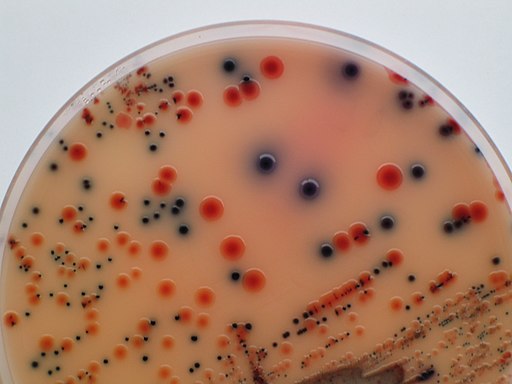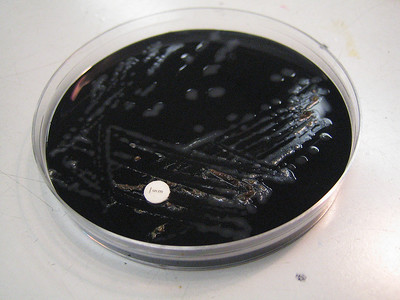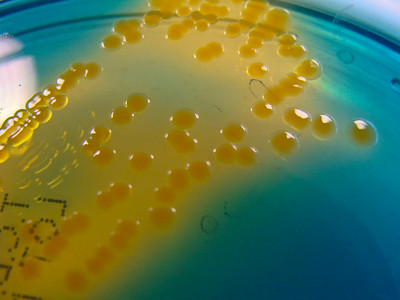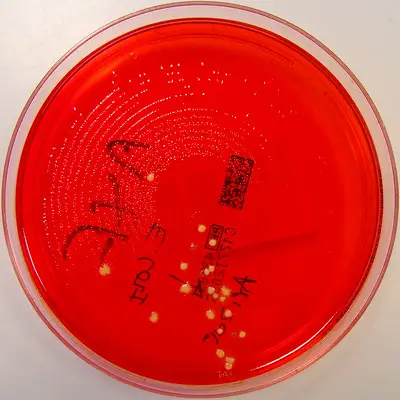Which Bacteria Cause Food Poisoning?
Also known as foodborne illness, food poisoning is characterized by nausea, vomiting, diarrhea, abdominal cramping, and pain. It might be caused by ingesting food contaminated with bacteria, viruses, or a number of other parasites (e.g. Giardia). Food poisoning may be the result of toxins produced by these agents.
While the illness is mild for most patients it can prove fatal, resulting in long-term health issues like kidney failure, nerve damage, and even death. Along with viruses like Norovirus, bacteria are the most common causative agents of food poisoning.
Here, some of the most common bacteria include:
- Salmonella
- Clostridium
- Campylobacter
- Staphylococcus aureus
- E. coli
- Listeria
- Vibrio
- Bacillus cereus
- Shigella
* According to the Center for Disease Control, there are over 250 foodborne diseases. While a few of the causative agents have been identified, the majority remain unknown (unspecified agents).
Salmonella
Salmonella are rod-shaped, Gram-negative bacteria. They are characterized by peritrichous flagella and O, H, Vi antigens. The genus consists of two species namely, Salmonella bongori and Salmonella enterica. However, the two are further divided into more than 2,000 serovars that are considered different species in some literature.
They are commonly found in the intestinal tract of human beings and animals where they invade the mucosa and penetrate epithelial cells. As facultative intracellular bacteria, they can survive outside the host cells.
Unlike some of the other bacteria, Salmonella produces both exotoxins (cytotoxins and enterotoxins) and endotoxins.
Following cell invasion, Salmonella activates the release of pro-inflammatory cytokines that result in an inflammatory reaction. This causes diarrhea which may, in turn, result in ulceration and destruction of the mucosa.
* Salmonella are responsible for salmonellosis. The infection may manifest as Salmonella gastroenteritis (characterized by fever, diarrhea, and abdominal cramps) or enteric fevers.
* Animals are the main reservoir of bacteria. However, the disease is foodborne and can also be transmitted from one person to another (mostly through the fecal-oral route).
Clostridium
The genus Clostridium consists of rod-shaped, Gram-positive bacteria. While the genus consists of more than 250 species, only a few are pathogenic (C. perfringens, C. difficile, C. tetani, and C. botulinum) while several others exist as opportunistic parasites.
Clostridium perfringens, the most common pathogen in the group can cause food poisoning in human beings. However, it can also be found in the intestine of many other animals.
Given that the bacterium can be found in animals, eating raw or improperly cooked meat and meat products is one of the most common methods through which the bacteria is transmitted.
Like Salmonella, Clostridium perfringens also produces a number of toxins including enterotoxin, Delta, and Beta toxin. Generally, symptoms may start manifesting 6 to 24 hours after the infection. These include watery diarrhea and abdominal cramps.
Campylobacter
The genus Campylobacter consists of curved (comma, spiral or s-shaped) Gram-negative bacteria some of which move by means of a polar flagellum.
In this group, Campylobacter jejuni and Campylobacter coli are the major causes of food poisoning.
Also known as campylobacteriosis, Campylobacter infections often occur as a result of ingesting contaminated food and water. Once ingested, these bacteria use their flagella to colonize the mucus lining and consequently invade epithelial cells thus causing gastroenteritis (characterized by watery diarrhea, vomiting, stomach cramps, and pain).
* Campylobacter jejuni produces the genotoxin distending cytolethal toxin (CDT) which affects the progression or normal cell cycle.
Staphylococcus aureus
Staphylococcus aureus is a spherical, Gram-positive bacterium.
Infection often occurs following ingestion of contaminated or affected poultry, meat, and meat products. Some of the other foods associated with the bacterium include eggs, tuna, macaroni, and dairy products, etc. Like the other bacteria, Staphylococcus aureus also released exotoxins (S. aureus enterotoxins).
Symptoms normally manifest 2 to 8 hours after ingestion. These include nausea and violent vomiting, diarrhea, and abdominal cramps. Though the infection is self-limiting, it can prove severe in children and the elderly.
* Staphylococcus aureus is part of the skin flora and therefore commonly found on human beings and animals. For this reason, food products can be easily contaminated. Even in cases where foods are properly cooked, the bacterium can proliferate (if the food is contaminated) at room temperature and cause Staphylococcal food poisoning.
* S. aureus enterotoxins tend to be resistant to extreme conditions (heat and low pH). For this reason, they can still be active in the digestive tract.
Escherichia coli (E.Coli)
Escherichia coli is a rod-shaped, Gram-negative bacterium of the genus Escherichia.
It's commonly found in the intestine of human beings and animals where the majority of strains are harmless commensals. However, some of the strains are dangerous pathogens (e.g. E. coli O157:H7).
Individuals can become infected with pathogenic strains when they ingest contaminated water (e.g. from a stream or river) or consume contaminated foods (beef, fresh produce, and milk).
The bacterium can also be transmitted from one person to another especially in areas with poor sanitation. Pathogenic strains of E. coli release a powerful toxin known as Shiga toxin. Even in little concentration, the toxin is capable of causing damage to the small intestine epithelium.
Some of the symptoms associated with E. coli infections include abdominal cramps, bloody diarrhea, fever, and vomiting.
* Symptoms usually manifest 3 to 4 days after ingestion.
Listeria
The genus Listeria consists of rod-shaped, Gram-positive bacteria.
They can be found in a variety of habitats including soil, vegetation, silage, food processing plants, and sewage, etc. For this reason, there are many routes through which they can infect human beings and animals. With respect to food, they are commonly associated with unpasteurized milk and dairy products (soft cheese and brie) as well as various ready-to-eat foods.
Although there are many sources of Listeria, it's worth noting that the infection (listeriosis) is rare and self-limiting (goes away within a short period of time). However, it might be severe in newborns and immunocompromised individuals.
* Listeria monocytogenes produce the toxin Listeriolysin O (LLO). Some of the symptoms associated with the infection include fever, fatigue, and flu-like symptoms.
Vibrio
The genus Vibrio consists of curved, Gram-negative bacteria.
Members of this group are common in aquatic environments including coastal water, rivers, and aquaculture settings. They are responsible for vibriosis which has been associated with about 100 deaths annually in the United States.
Given Vibrio are commonly found in aquatic environments, infections are often associated with consuming raw and undercooked seafood. They release the Cholera toxin which can cause severe watery diarrhea. Some of the other symptoms of the infection include nausea and vomiting, fever, abdominal cramping, and chills.
* The bacterium Vibrio cholerae is a common cause of dysentery.
Bacillus cereus
Bacillus cereus is a rod-shaped, Gram-positive bacteria commonly found in soil and marine habitats.
Given that it's commonly found in the soil, this gives it easy access to various food crops including rice, and potatoes, etc. Human beings can be infected if they eat contaminated foods (not properly washed or cooked).
The bacterium produces three types of toxins namely, Cytotoxin K, Hemolysin BL, and Non-hemolytic enterotoxin. These are responsible for emetic syndrome (associated with vomiting) and diarrheal syndrome.
Shigella
The genus Shigella consists of species closely related to E. coli. Members of this group are rod-shaped, Gram-negative species commonly found in the intestine of human beings and other primates.
Like E. coli, they also produce shiga toxin which has been associated with cytotoxicity, enterotoxicity, and neurotoxicity. Some of the symptoms associated with Shigella infection (Shigellosis) include diarrhea (sometimes this is bloody), stomach pain and cramps, and fever.
* Symptoms of Shigella infection often manifest about 2 days after the initial infection.
Bacteriology as a field of study
Bacterial Transformation, Conjugation
How do Bacteria cause Disease?
Bacteria - Size, Shape and Arrangement - Eubacteria
How do Antibiotics kill Bacteria?
Does Salt Water kill Bacteria?
Which Bacteria cause Food Poisoning?
Return From "Which Bacteria Cause Food Poisoning?" to MicroscopeMaster home
References
Giannella, R. A. (1996). Salmonella. Medical Microbiology. 4th edition.
María Ángeles Argudín, María Carmen Mendoza, and María Rosario Rodicio. (2010). Food Poisoning and Staphylococcus aureus Enterotoxins.
Olvera, E. M. et al., (2016). Cytolethal Distending Toxin From Campylobacter jejuni Requires the Cytoskeleton for Toxic Activity.
Shaynoor Dramsi and Pascale Cossart. (2002). Listeriolysin O a genuine cytolysin optimized for an intracellular parasite.
Links
Find out how to advertise on MicroscopeMaster!








